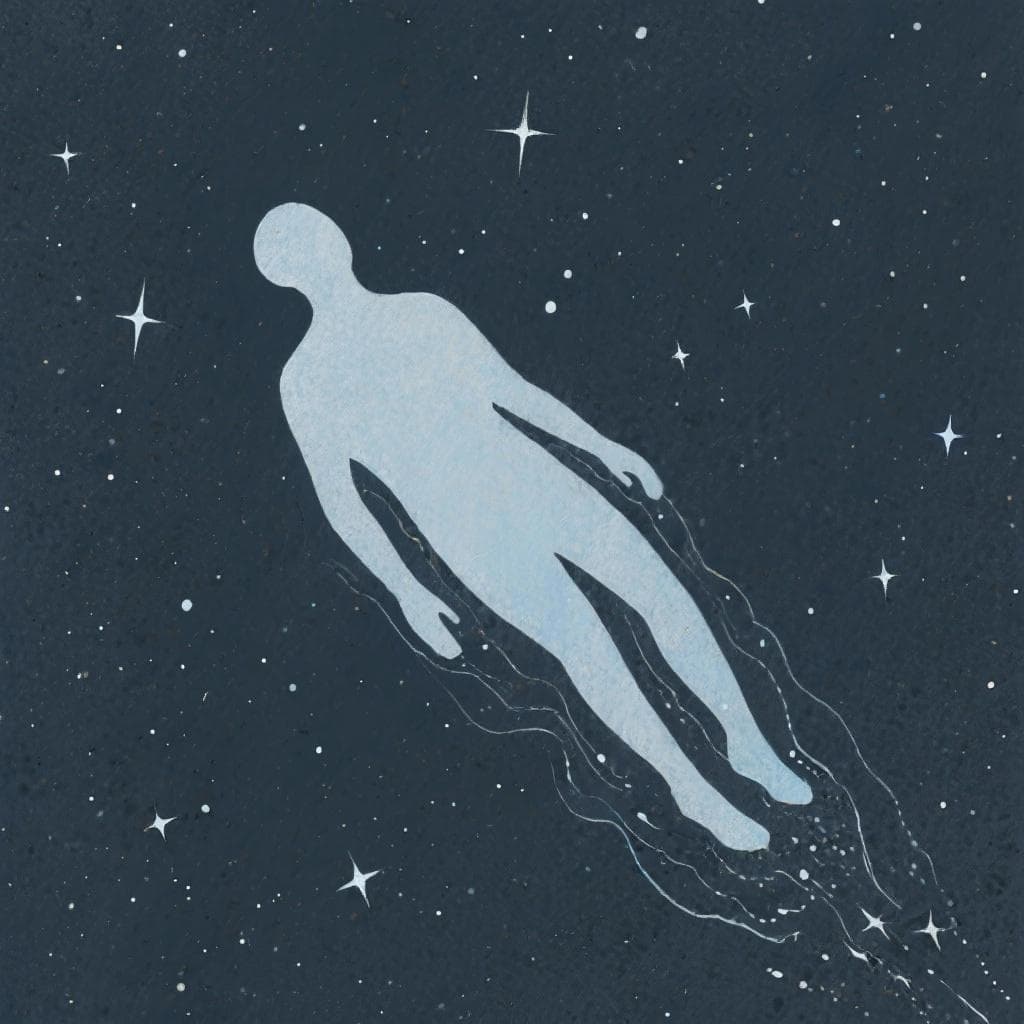"Vivir es caer sin cesar."
/vee-VEER es kah-EHR seen seh-SAHR/
To live is to fall ceaselessly.
💡 Understanding the Quote
"Vivir es caer sin cesar."
🎨 Visual Representation

Paz's quote captures the contemplative idea of life as a perpetual, unavoidable fall.
🔑 Key Words
📖 Context
From the essay collection 'El arco y la lira' (The Bow and the Lyre) by Octavio Paz, published in 1956.
📝 In Action
A veces siento que, como decía Paz, 'vivir es caer sin cesar'. Cada vez que supero un problema, aparece otro.
C1Sometimes I feel that, as Paz said, 'to live is to fall ceaselessly.' Every time I overcome one problem, another appears.
La visión existencialista de Octavio Paz se resume en su frase: 'Vivir es caer sin cesar'.
C1Octavio Paz's existentialist vision is summarized in his phrase: 'To live is to fall ceaselessly.'
✍️ About the Author
📜 Historical Context
Written in the mid-20th century, a period deeply influenced by European existentialist philosophy following World War II. Octavio Paz, a Nobel laureate, was a key figure in Latin American modernism, and 'El arco y la lira' is one of his most important works, exploring the nature of poetry, language, and existence itself.
🌍 Cultural Significance
This quote is a cornerstone of Mexican existential thought and is frequently cited in literary and philosophical discussions across the Spanish-speaking world. It reflects a deep introspection about the human condition that is characteristic of much of the great 20th-century Latin American literature.
📚 Literary Analysis
The quote's power lies in its stark simplicity. By directly equating 'vivir' (to live) with 'caer sin cesar' (to fall without stopping), Paz makes the struggle inherent to the act of living. He uses the infinitive 'caer,' which frames falling not as something one does while living, but as the very definition of life itself.
⭐ Usage Tips
For Deep, Philosophical Moments
This is a heavy, somber quote. Use it in serious conversations about existentialism, the nature of suffering, or the constant struggles of life. It's not for casual or lighthearted situations.
Showcase Literary Knowledge
Referencing this quote and attributing it correctly to Octavio Paz demonstrates a sophisticated understanding of 20th-century Latin American literature and philosophy.
🔗 Related Quotes
✏️ Quick Practice
💡 Quick Quiz: Vivir es caer sin cesar.
Question 1 of 2
Who is the author of the quote 'Vivir es caer sin cesar'?
🏷️ Categories
Themes:
Frequently Asked Questions
Is this quote considered nihilistic?
Not necessarily. While it's certainly pessimistic, it can also be interpreted through an existentialist lens. Rather than saying life is meaningless, it says life *is* the struggle. Finding meaning within that constant fall is the challenge, a perspective that is more stoic than nihilistic.
In what kind of text does this quote appear?
It appears in 'El arco y la lira' (The Bow and the Lyre), which is not a novel or a poem, but a collection of profound essays on literary theory, the nature of poetry, and the human condition.
